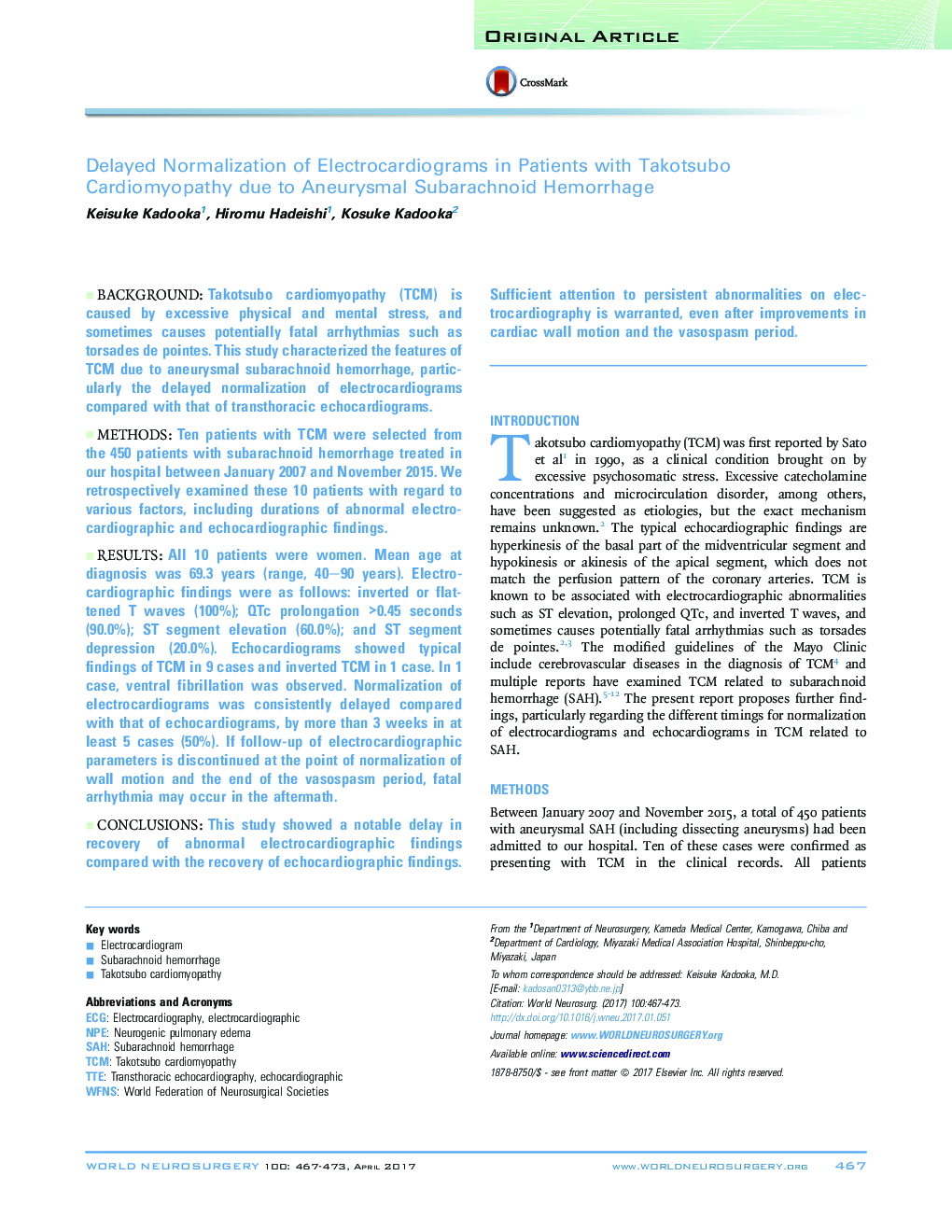| Article ID | Journal | Published Year | Pages | File Type |
|---|---|---|---|---|
| 5634526 | World Neurosurgery | 2017 | 7 Pages |
BackgroundTakotsubo cardiomyopathy (TCM) is caused by excessive physical and mental stress, and sometimes causes potentially fatal arrhythmias such as torsades de pointes. This study characterized the features of TCM due to aneurysmal subarachnoid hemorrhage, particularly the delayed normalization of electrocardiograms compared with that of transthoracic echocardiograms.MethodsTen patients with TCM were selected from the 450 patients with subarachnoid hemorrhage treated in our hospital between January 2007 and November 2015. We retrospectively examined these 10 patients with regard to various factors, including durations of abnormal electrocardiographic and echocardiographic findings.ResultsAll 10 patients were women. Mean age at diagnosis was 69.3 years (range, 40-90 years). Electrocardiographic findings were as follows: inverted or flattened T waves (100%); QTc prolongation >0.45 seconds (90.0%); ST segment elevation (60.0%); and ST segment depression (20.0%). Echocardiograms showed typical findings of TCM in 9 cases and inverted TCM in 1 case. In 1 case, ventral fibrillation was observed. Normalization of electrocardiograms was consistently delayed compared with that of echocardiograms, by more than 3 weeks in at least 5 cases (50%). If follow-up of electrocardiographic parameters is discontinued at the point of normalization of wall motion and the end of the vasospasm period, fatal arrhythmia may occur in the aftermath.ConclusionsThis study showed a notable delay in recovery of abnormal electrocardiographic findings compared with the recovery of echocardiographic findings. Sufficient attention to persistent abnormalities on electrocardiography is warranted, even after improvements in cardiac wall motion and the vasospasm period.
